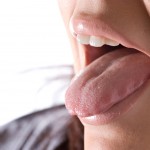
Salivary is a complex substance than contains electrolytes, mucus, glycoproteins, enzymes, lysosomes and immunoglobulin. Its normal production is considered important for oral health. The aim of this review was to evaluate the quality of the evidence for the efficacy of diagnostic methods used to identify oral dryness.
The authors searched the PubMed, Cochrane Library and Web of Science databases for human studies looking at oral dryness article in English. Four authors screened all titles and abstracts independently for possible inclusion. The Quality Assessment of Diagnostic Accuracy Studies (QUADAS) tool was used to assess quality.
18 studies were included in the review and 5 categories of test were identified
- Secretion tests
- Mucosal/surface tests;
- ‘Functional’ tests;
- Glandular morphology;
- Questionnaires and/or interviews
The patient selection criteria were not clearly described and the test or reference methods were not described in sufficient detail for it to be reproduced. None of the included studies reported information on uninterpretable/intermediate results nor data on observer or instrument variation. Seven of the studies presented their results as a percentage of correct diagnoses.
The authors concluded
The evidence for the efficacy of clinical methods to assess oral dryness is sparse and it can be stated that improved standards for the reporting of diagnostic accuracy are needed in order to assure the methodological quality of studies. There is need for effective diagnostic criteria and functional tests in order to detect those individuals with oral dryness who may require oral treatment, such as alleviation of discomfort and/or prevention of diseases.
Comments
A significant amount of health care funding is spent on diagnostic testing so it is important that we use tests that provide clinicians with clear information on which to base to identify, manage and treat those patients that require care. The development of clear criteria for assessing the quality of diagnostic test studies like QUADAS and the latest QUADAS 2 along with standards for reporting diagnostic test standards (STARD) is helpful and was highlighted by the authors. Methods for undertaking systematic reviews of diagnostic test are being developed by the Cochrane Diagnostic Test Accuracy Group and the developing handbook is available online.
Links
Diogo Löfgren C, Wickström C, Sonesson M, Tapia Lagunas P, Christersson C. A systematic review of methods to diagnose oral dryness and salivary gland function. BMC Oral Health. 2012 Aug 8;12(1):29. [Epub ahead of print] PubMed PMID: 22870895.
STARD – STAndards for the Reporting of Diagnostic accuracy studies
Cochrane Diagnostic Test Accuracy Reviews handbook
